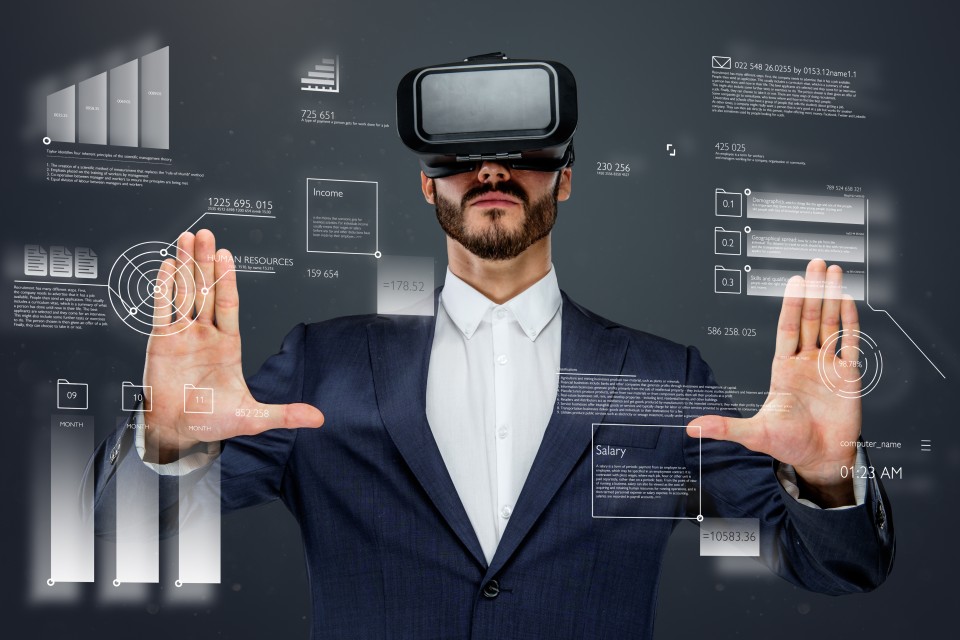
In the fast-paced realm of technological evolution, businesses are witnessing a profound transformation. The infusion of emerging technologies is not just a trend; it’s a seismic shift that promises to reshape the business landscape in 2024 and beyond. As we stand on the cusp of a new year, it’s essential to delve into the key technological forces that will drive innovation, efficiency, and competitiveness across industries.
A. Artificial Intelligence and Machine Learning in Business:
Artificial Intelligence (AI) and Machine Learning (ML) have transcended the realm of buzzwords, becoming integral components of modern business strategies. This evolution is not static; it’s a dynamic force continually propelling itself forward.
AI-Powered Automation: Reshaping Operational Efficiencies
Enterprises are increasingly relying on AI-driven automation to streamline operational workflows. From routine tasks to complex processes, automation is the linchpin of enhanced efficiency. Consider the deployment of chatbots in customer service, a prime example of how AI not only expedites query resolution but also frees up human resources for more nuanced tasks.
Predictive Analytics and Decision-Making
The advent of predictive analytics is a game-changer in the decision-making landscape. Organizations leverage AI algorithms to sift through vast datasets, extracting valuable insights that inform strategic choices. For instance, retailers employ predictive analytics to foresee consumer trends, ensuring they stay ahead in a dynamic market.
Innovations in Customer Service
In the customer service domain, AI innovations are rewriting the playbook. Virtual assistants equipped with natural language processing capabilities offer personalized interactions, enhancing customer satisfaction. This not only ensures a more seamless customer experience but also opens avenues for businesses to proactively address consumer needs.
AI in Market Research: Transforming Insights
Beyond automation and decision-making, AI is making significant inroads in market research. Machine learning algorithms can analyze consumer behavior, predict market trends, and provide businesses with invaluable insights. This application of AI empowers businesses to tailor their products and strategies in alignment with evolving consumer preferences.
The fusion of AI and business is not just about embracing technology; it’s about recalibrating the very essence of how businesses operate. As we step into 2024, the synergies between AI and business processes are poised to deepen, fueling a new era of efficiency and innovation.
B. Blockchain Revolutionizing Transactions:
Blockchain, the decentralized ledger technology that underpins cryptocurrencies, is catalysing a revolution in how transactions are conducted and validated. It’s more than a technology; it’s a paradigm shift toward transparency and security.
Smart Contracts: Streamlining Business Processes
At the forefront of this revolution are smart contracts, self-executing contracts with the terms of the agreement directly written into code. Businesses are leveraging smart contracts to automate and streamline various processes. Consider a scenario where supply chain transactions are governed by smart contracts, ensuring seamless and tamper-proof execution of agreements. This not only reduces the risk of fraud but also expedites the entire supply chain cycle.
Supply Chain Transparency through Blockchain
Transparency in the supply chain has long been a challenge, with complexities often shrouding the journey of products from manufacturer to consumer. Blockchain addresses this by providing an immutable record of every transaction along the supply chain. This transparency not only instills confidence among consumers but also aids in identifying and rectifying inefficiencies. Case in point, major retailers are adopting blockchain to trace the origins of products, from farm to shelf, ensuring quality and authenticity.
Decentralized Finance (DeFi): Revolutionizing Banking
Expanding beyond transactions, blockchain is giving rise to decentralized finance (DeFi), challenging traditional banking systems. With DeFi, individuals can access financial services like loans and savings without intermediaries. This democratization of finance has the potential to reshape the financial landscape, offering inclusivity and efficiency.
The impact of blockchain on the business landscape is akin to laying down new tracks for a more secure and efficient journey. As we navigate the intricate web of transactions in 2024, the adoption of blockchain will be a strategic move towards fortifying the foundations of trust and accountability.
C. 5G and Connectivity Transformations:
As we anticipate the business landscape of 2024, the rollout of 5G technology takes center stage, promising an unprecedented leap in connectivity and communication capabilities.
Enhanced Mobile Experiences and Consumer Interaction
The arrival of 5G signifies more than just faster internet on our smartphones. It heralds a new era of enhanced mobile experiences and consumer interactions. Imagine augmented reality applications that seamlessly blend the virtual and physical worlds or high-quality video conferencing without lag. These advancements are not just conveniences; they are catalysts for innovation across industries.
The Internet of Things (IoT) and 5G Synergy
While the Internet of Things (IoT) has been steadily weaving a tapestry of interconnected devices, the synergy with 5G is set to amplify its impact. The combination of 5G’s high speed and low latency provides the ideal infrastructure for a vast network of IoT devices. Industries like healthcare, manufacturing, and transportation will experience a surge in efficiency as real-time data transmission becomes the norm.
5G and Edge Computing: Transforming Data Processing
Beyond faster internet speeds, the integration of 5G with edge computing is revolutionizing data processing. This synergy enables real-time data analysis at the edge of the network, reducing latency and enhancing the capabilities of IoT devices. Businesses can expect a paradigm shift in how data is collected, processed, and utilized.
The implications of 5G reach far beyond faster internet browsing; they extend to the very fabric of how businesses operate and interact. As we navigate the evolving landscape, businesses that harness the potential of 5G will gain a competitive edge in speed, responsiveness, and innovation.
D. Internet of Things (IoT) Revolution:
The Internet of Things (IoT) is no longer a futuristic concept; it’s a present reality shaping the way businesses operate and deliver value.
Industrial IoT (IIoT): Transforming Manufacturing and Production
In the realm of manufacturing and production, the Industrial Internet of Things (IIoT) is a game-changer. Imagine a factory where machines communicate with each other, optimizing production schedules and preempting maintenance needs. This is the promise of IIoT, a paradigm shift towards predictive and efficient industrial processes.
Smart Cities and Sustainable Living
Beyond industry, IoT is playing a pivotal role in shaping smart cities and fostering sustainable living. Connected devices are transforming urban spaces, optimizing resource utilization, and enhancing the quality of life. From smart traffic management to waste reduction, the possibilities are vast. As we step into 2024, the evolution of IoT is set to redefine our relationship with technology and the environment.
IoT in Healthcare: Personalized Patient Care
The healthcare sector is experiencing a revolution with IoT, providing opportunities for personalized patient care. Wearable devices, connected medical equipment, and remote patient monitoring enable healthcare professionals to gather real-time data, leading to more informed decisions and improved patient outcomes.
The interconnected world envisioned by IoT is not just a technological marvel; it’s a blueprint for a smarter, more sustainable future. Join us as we unravel more facets of the technological tapestry shaping the business landscape in the next year. In the upcoming sections, we will explore the critical realm of cybersecurity and the adaptive measures businesses must undertake in the face of digital transformation. The journey into the future continues, and businesses at the forefront of innovation are poised to thrive.
E. Cybersecurity in the Age of Digital Transformation:
As businesses race ahead in the digital transformation journey, the spotlight on cybersecurity intensifies. The evolving threat landscape demands a proactive and adaptive approach to safeguarding digital assets.
Adaptive Cybersecurity Measures
In a landscape where cyber threats constantly evolve, static security measures fall short. Businesses are increasingly adopting adaptive cybersecurity strategies. These strategies continuously assess and adjust to the ever-changing threat environment. By employing artificial intelligence and machine learning, businesses can detect anomalies and potential threats in real-time, fortifying their defenses against the myriad of cyber risks.
Human Element in Cybersecurity
While technology plays a crucial role in cybersecurity, the human element remains paramount. Employee training and awareness programs are pivotal in establishing a robust cybersecurity culture within organizations. In 2024, businesses will need to invest in educating their workforce about the latest cyber threats and best practices. After all, the strongest defense is an informed and vigilant team.
Zero Trust Security Model: Rethinking Access Control
The traditional perimeter-based security model is giving way to a Zero Trust approach. In a Zero Trust framework, no entity, whether inside or outside the network, is trusted by default. This proactive model emphasizes continuous verification and validation of trust, ensuring that access is granted based on the current security posture. As businesses navigate a landscape of evolving cyber threats, the Zero Trust model is gaining traction as a robust defense strategy.
In the face of escalating cyber threats, businesses must not only build stronger walls but also cultivate a resilient workforce that understands the dynamic nature of cybersecurity. As we continue our exploration of technologies shaping the business landscape, the emphasis on cybersecurity becomes more pronounced—an indispensable aspect of thriving in the digital era.
Conclusion:
As we conclude this exploration into the technologies poised to shape the business landscape in 2024, the overarching theme is clear: change is not on the horizon; it’s here. Artificial Intelligence and Machine Learning are redefining efficiency, blockchain is reshaping transactions, 5G is revolutionizing connectivity, and the Internet of Things is creating an interconnected world. Amidst this transformation, cybersecurity stands as the sentinel, guarding the gates of progress.
In this dynamic landscape, businesses face a choice—to embrace change and lead or to resist and risk obsolescence. The future is not a distant point; it’s a series of strategic decisions made today. The businesses that leverage these emerging technologies will not only survive but thrive in the ever-evolving terrain of the digital age.
As we embark on the journey into 2024, we invite you to join the conversation. Share your thoughts on these emerging technologies and how they resonate with your business or industry. The dialogue around technology is not just a discussion of tools and trends; it’s a collective exploration of the future. Stay tuned for more insights, trends, and discussions as we navigate the unfolding landscape of technology and business. The journey continues, and the possibilities are limitless.
